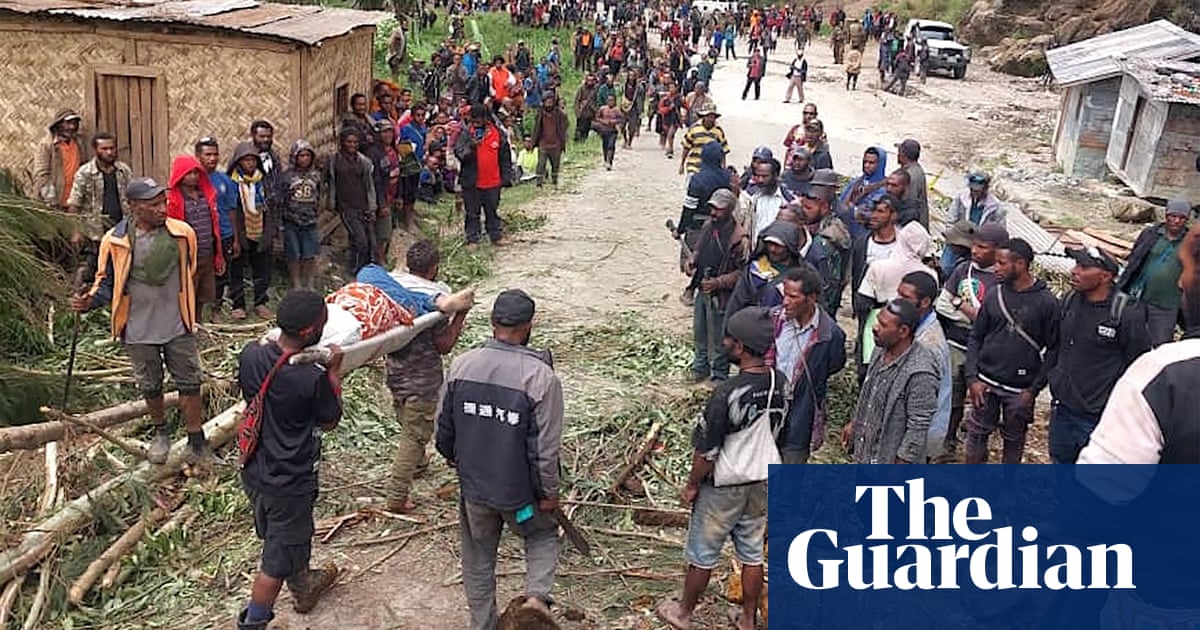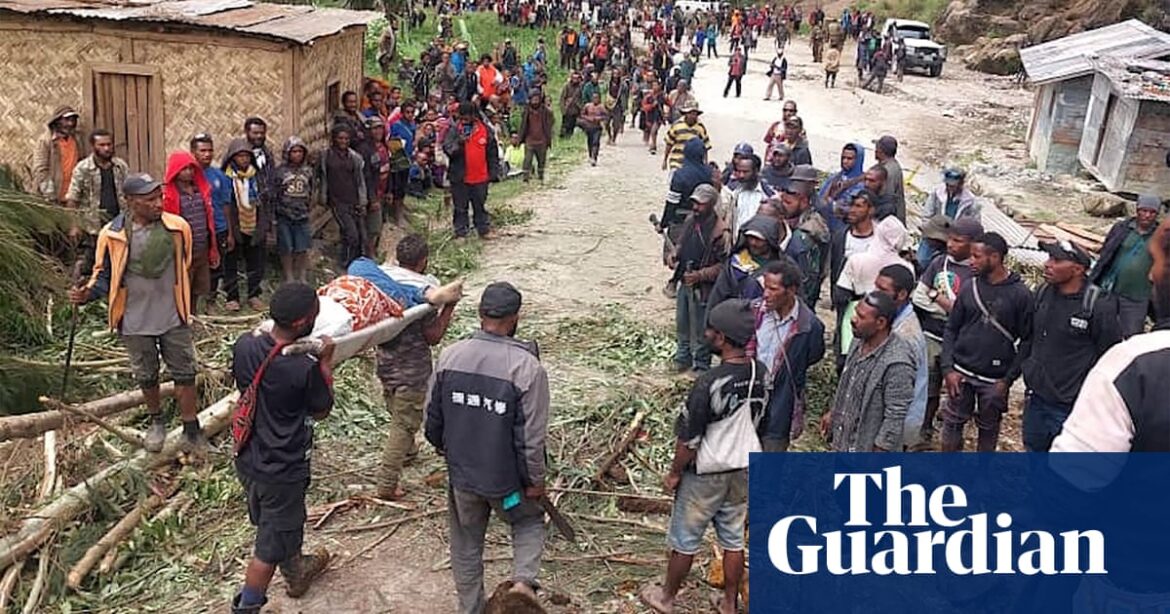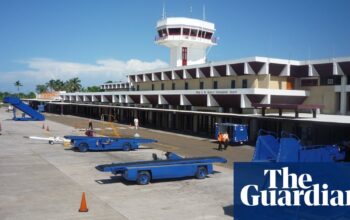
More than 670 people are believed to have been killed in a massive landslide in Papua New Guinea, the UN migration agency has said, as emergency workers and relatives gave up hope that any survivors would be found.
The death toll from the landslide on Friday had been estimated at more than 300, but 48 hours later the International Organization for Migration (IOM) said it may be more than double that, with the full extent of destruction still unclear.
Only five bodies had been retrieved from the rubble so far, the agency said, while aid and rescue efforts in the mission in the South Pacific island nation, about 1,400 miles (2,300km) north of Australia, were being hindered by dangerous conditions on the ground.
The chief of the IOM’s mission to Papua New Guinea, Serhan Aktoprak, said the toll was based on calculations by local and provincial officials that more than 150 homes had been buried by the landslide. A previous estimate had been 60 homes.
“Land is still sliding, rocks are falling, ground soil is cracking due to constant increased pressure and ground water is running, thus the area is posing an extreme risk for everyone,” Aktoprak said in a statement.
More than 250 houses near the stricken area of Yambali village in Enga province had been abandoned and about 1,250 people had been displaced, the agency said, with many taking temporary shelter with relatives and friends.
“People are using digging sticks, spades, large agricultural forks to remove the bodies buried under the soil,” Aktoprak said. The revised toll was “not solid” because it was based on the average size of families per household in the region, he said.
Aktoprak would not speculate on the possibility that the actual toll could be higher. “It’s difficult to say,” he told the Associated Press. “We want to be quite realistic. We don’t want to come up with any figures that would inflate the reality.”
Australia’s defence minister Richard Marles said there were discussions with Papua New Guinea about what assistance it needed.
“We’ve got, obviously, airlift capacity to get people there and there may be other equipment that we can bring to bear in terms of the search and rescue,” he told ABC radio.
“And all of that we are talking through with with PNG right now…it’s just now a matter of working out exactly what we can do in the context of this occurring in a very remote part of the country.”
Rescue teams had abandoned hope of finding any more survivors under earth and rubble piled up to 8 metres deep, he said. “People are coming to terms with this so there is a serious level of grieving and mourning,” Aktoprak said.
Social media footage posted by villagers and local media teams showed people clambering over rocks, uprooted trees and mounds of dirt desperately searching for survivors. Women could be heard weeping in the background.
The IOM said a primary school, several small businesses and stalls, a guesthouse and a petrol station had also been buried.
The agency said the population of the village was relatively young and it feared that most fatalities would be children aged 15 and younger. The national government was considering whether it needed to officially request more international support.
The landslide hit a section of main road near the Porgera gold mine in a geographically remote region of the country. The only way to reach the mine and the area cut off from the rest of Enga province was by helicopter.
Army engineers were at the site but heavy equipment such as excavators required for the rescue were yet to arrive, authorities said, adding that the community may not allow use of excavators until their mourning obligations were complete.
Government authorities were establishing care and evacuation centres on safer ground on either side of the massive swath of earth, which left debris strewn across a 80 sq miles (200 sq km) zone after a limestone mountainside sheared away.
A humanitarian convoy had also started distributing bottled water, food, clothing, hygiene kits, kitchen utensils, tarpaulins, as well as personal protective equipment to the nearly 4,000 people known to be living in the affected area.
However, aid groups and local government officials have said the number is probably higher because the area is a refuge for people displaced by tribal violence nearby. At least 26 men were killed in Enga province in February in an ambush.
Eight more local men were killed in a clash between two rival clans on Saturday in a longstanding dispute, unrelated to the landslide. About 30 homes and five retail businesses were burned down in the fighting, officials said.
Soldiers were providing security for the aid convoys heading to the region and Aktoprak said he did not expect tribal combatants would target them, but noted opportunistic criminals might take advantage of the mayhem.
“This could basically end up in carjacking or robbery,” Aktoprak said. “There is not only concern for the safety and security of the personnel, but also the goods because they may use this chaos as a means to steal.”
Billy Joseph, Papua New Guinea’s defence minister, and the national disaster centre director, Laso Mana, were flying on Sunday from Port Moresby by helicopter to the provincial capital, Wabag, to see what was needed, authorities said.
The US and Australia, the island’s biggest foreign aid donor, are among several governments that have publicly stated their willingness to provide more help to the developing nation, most of whose 10 million inhabitants are subsistence farmers.
Reuters and Associated Press contributed to this report
Source: theguardian.com



